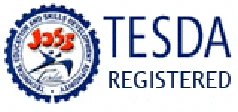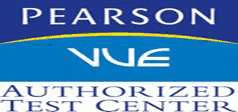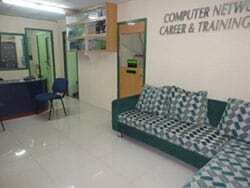COURSE DURATION: 30hrs
Course Description:
This course is a five-day, instructor-led course that prepares you to pass the 300-135 TSHOOT exam which is part of the CCNP Routing and Switching certification path. This course will demonstrate your skills in plannning and performing regular maintenance on complex enterprise routed and switched networks. This will also show you how you can use technology-based practices and a systematic ITIL-compliant approach to perform network troubleshooting.
Exam Code: 300-135 – Troubleshooting and Maintaining Cisco IP Networks (TSHOOT)
END OF THE ROAD: This course is no longer offered for Certification effective Feb 24, 2020 . Please check this link for the New CCNP Enterprise Certification
Course Outcome:
- Proficient in using troubleshooting tools and methodologies that are used to identify and resolve issues in complex enterprise networks
- Isolate and fix all network area issues relative to the needs of your customer infrastructure
Course Prerequisite:
300-101 – Implementing Cisco IP Routing (ROUTE)
300-115 – Implementing Cisco IP Switched Networks (SWITCH
CISCO LAB EQUIPMENTS:
- CISCO Routers: 2901, 2801 and 1841
- CISCO Switches: Catalyst 3550 Layer 3 (Multi-Layer) series, Catalyst 3750 Series Layer 3
- WIRELESS: AIRONET 1242AG LWAPP
Practice Exams:300-135
Course Outline:
Chapter 1: Network Principles
Use Cisco IOS troubleshooting tools
- Debug, conditional debug
- Ping and trace route with extended options
Apply troubleshooting methodologies
- Diagnose the root cause of networking issues (analyze symptoms, identify and describe root cause)
- Design and implement valid solutions
- Verify and monitor resolution
Chapter 2: Layer 2 Technologies
Troubleshoot switch administration
- SDM templates
- Managing MAC address table
- Troubleshoot Err-disable recovery
Troubleshoot Layer 2 protocols
- CDP, LLDP
- UDLD
Troubleshoot VLANs
- Access ports
- VLAN database
- Normal, extended VLAN, voice VLAN
Troubleshoot trunking
- VTPv1, VTPv2, VTPv3, VTP pruning
- dot1Q
- Native VLAN
- Manual pruning
Troubleshoot EtherChannels
- LACP, PAgP, manual
- Layer 2, Layer 3
- Load balancing
- EtherChannel misconfiguration guard
Troubleshoot spanning tree
- PVST+, RPVST +, MST
- Switch priority, port priority, path cost, STP timers
- PortFast, BPDUguard, BPDUfilter
- Loopguard, Rootguard
Troubleshoot other LAN switching technologies
- SPAN, RSPAN
Troubleshoot chassis virtualization and aggregation technologies
- Stackwise
Chapter 3: Layer 3 Technologies
Troubleshoot IPv4 addressing and subnetting
- Address types (Unicast, broadcast, multicast, and VLSM)
- ARP
- DHCP relay and server
- DHCP protocol operations
Troubleshoot IPv6 addressing and subnetting
- Unicast
- EUI-64
- ND, RS/RA
- Autoconfig (SLAAC)
- DHCP relay and server
- DHCP protocol operations
Troubleshoot static routing
Troubleshoot default routing
Troubleshoot administrative distance
Troubleshoot passive interfaces
Troubleshoot VRF lite
Troubleshoot filtering with any protocol
Troubleshoot between any routing protocols or routing sources
Troubleshoot manual and autosummarization with any routing protocol
Troubleshoot policy-based routing
Troubleshoot suboptimal routing
Troubleshoot loop prevention mechanisms
- Route tagging, filtering
- Split-horizon
- Route poisoning
Troubleshoot RIPv2
Troubleshoot EIGRP neighbor relationship and authentication
Troubleshoot loop free path selection
- RD, FD, FC, successor, feasible successor
Troubleshoot EIGPR operations
- Stuck in active
Troubleshoot EIGRP stubs
Troubleshoot EIGRP load balancing
- Equal cost
- Unequal cost
Troubleshoot EIGRP metrics
Troubleshoot EIGRP for IPv6
Troubleshoot OSPF neighbor relationship and authentication
Troubleshoot network types, area types, and router types
- Point-to-point, multipoint, broadcast, nonbroadcast
- LSA types, area type: backbone, normal, transit, stub, NSSA, totally stub
- Internal router, backbone router, ABR, ASBR
- Virtual link
Troubleshoot OSPF path preference
Troubleshoot OSPF operations
Troubleshoot OSPF for IPv6
Troubleshoot BGP peer relationships and authentication
- Peer group
- Active, passive
- States and timers
Troubleshoot eBGP
- eBGP
- 4-byte AS number
- Private AS
Chapter 4: VPN Technologies
Troubleshoot GRE
Chapter 5: Infrastructure Security
Troubleshoot IOS AAA using local database
Troubleshoot device access control
- Lines (VTY, AUX, console)
- Management plane protection
- Password encryption
Troubleshoot router security features
- IPv4 access control lists (standard, extended, time-based)
- IPv6 traffic filter
- Unicast reverse path forwarding
Chapter 6: Infrastructure Services
Troubleshoot device management
- Console and VTY
- Telnet, HTTP, HTTPS, SSH, SCP
- (T) FTP
Troubleshoot SNMP
- v2
- v3
Troubleshoot logging
- Local logging, syslog, debugs, conditional debugs
- Timestamps
Troubleshoot Network Time Protocol(NTP)
- NTP master, client, version 3, version 4
- NTP authentication
Troubleshoot IPv4 and IPv6 DHCP
- DHCP client, IOS DHCP server, DHCP relay
- DHCP options (describe)
Troubleshoot IPv4 Network Address Translation (NAT)
- Static NAT, Dynamic NAT, PAT
Troubleshoot SLA architecture
Troubleshoot tracking objects
- Tracking objects
- Tracking different entities (for example, interfaces, IPSLA results)
[testimonials category=”ccna-and-ccnp-certifications” paging=”1″]
[crp]








How much is the tuition for the short course “Troubleshooting and Maintaining Cisco IP Networks(TSHOOT)”?
Is there any confirmed schedule already this month (July) or the next?